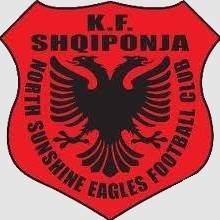North Sunshine Eagles SC recognises that:
- Environmental (second-hand) tobacco smoke is a health hazard and that non-smokers should be protected from it.
- Role modelling can have a significant impact upon the junior members of the club.
- Smoke free areas make smoking less visible and less socially acceptable.
- Smoke free areas support smokers who are trying to quit as well as reduce their overall cigarette consumption.
- Outdoor smoke free areas help to reduce the amount of cigarette butt litter (reducing clean-up costs, fire risk and children’s health risk due to swallowing discarded butts).
- Smoke free environments are advantageous in attracting new members as well as positively promoting the club in the community.
Victorian legislation (Public Health Act 1997) also bans smoking within 20 metres of competition, seating or marshalling areas at outdoor sportsgrounds while a sporting event is being conducted. This includes the period 30 minutes before and after the sporting event. It does not include informal or impromptu sporting activities.
Accordingly, the following policy shall apply to all members, administrators, officials, coaches, players, spectators, visitors and other volunteers and/or or staff of the club.
General
- Cigarettes and other tobacco products will not be sold, including from vending machines, at any time at or by the club.
- Coaches, players, officials and volunteers will refrain from smoking while involved in an official capacity for the club, on and off the field.
- No images of club volunteers, members, officials, coaches and players smoking at club-related activities are to be placed on social media.
Smoke Free Areas
The North Sunshine Eagles SC requires the following areas of Larissa Reserve and Lloyd Reserve to be smoke free:
- All indoor areas
- All outdoor playing/training areas
Rationale
- All spectator areas (standing and seated, covered and uncovered)
- All canteen, catering and eating and drinking areas
Smoke free areas will be signed (where possible) and promoted in club materials. A appropriate designated smoking permitted area will be identified by the club and made known to patrons.
Functions
- Club functions, including social and fundraising events and meetings, held at club facilities are to be smoke free.
- Club functions, including social and fundraising events and meetings, held away from club facilities are to be smoke free wherever possible.
- If provided, smokers may only smoke at outdoor designated smoking areas and are to dispose of cigarette butts safely before entering facilities.
- Invitations and advertising for functions, meetings and events will be promoted as smoke free.
Non-compliance
All club committee members will enforce the smoke free policy and any non-compliance will be handled according to the following process:
- Explanation of the club policy and the States’ laws to the person/people concerned, including identification of the areas in which smoking is permitted
- Continued non-compliance with the policy should be handled by at least two committee members who will use their discretion as to the action taken, which may include asking the person/ people to leave the club facilities or function.
Policy Promotion
The club will promote the smoke free policy regularly by:
- Putting a copy of the policy in club newsletters and printed member/player information and on the website.
- Promoting positive smoke free messages through the club’s social media.
- Displaying a copy of the policy in the club social rooms.
- Periodic announcements to members at functions.
- Placing non-smoking signage in prominent locations both indoors and outdoors.
The club recognises the importance of educating club members, particularly players, of the benefits of implementing a smoke free policy and will endeavour to provide information to assist this process.
Policy Review
This policy will be reviewed annually to ensure it remains relevant to club operations and reflects both community expectations and legal requirements.

